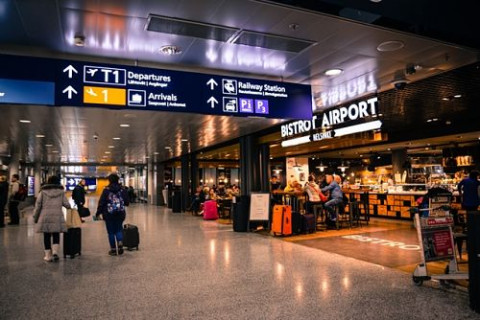What is an Example of Cultural Differences in Business?
There is no better way to understand the impact of cultural differences upon business than to look at real-life examples.
No matter what business, sector or market you are in, if you deal with people from different cultures, then cultural difference is going to impact what you do somewhere, somehow.
History is littered with examples of cultural differences in business:
- whether failed M&As,
- cross-cultural marketing blunders or
- retail giants venturing into foreign markets leaving with their tails between their legs.
However, have you ever thought about the airport?
Yes, the airport!
Perhaps one of the most multicultural and international of environments on planet earth and a perfect example of cultural differences in the business world.
According to the Airports Council International (ACI), the trade association representing airports around the world, culture explains how passengers interact with an airport and what they expect.
Based on a survey of 75 airports across 90 countries, the ACI found that “…between 35 to 45% of the overall customer satisfaction is impacted by a person’s cultural background.”
Cultural Differences in the Business of Airports
The findings of the survey highlight a couple of interesting examples in terms of cultural differences that demonstrate how important it is to pay attention to the impact of culture on any type of business.
Facilities
A traveller’s cultural background was found to have a direct impact on what expectations they had upon the airport environment.
People from collectivist cultures, where the group is important, believed the airport space was for everyone and that keeping everyone happy should be the primary purpose behind the space. As such you may find people from such culture spending more time in large groups, talking loudly and even taking part in group games or exercises!
On the other hand, people from more individualistic cultures, where the ‘self’ is more important, expected the airport to cater for their convenience and comfort. As such, they would expect more private seating, access to WIFI for business and of course more quiet areas.
As a business, what does an airport then do to deal with such cultural differences? Simple. It caters for both, which many international airports now do.
Employees
A traveller’s cultural background was also found to have an impact on their experience of the airport through employees and third-party representatives (retail staff, etc).
Different cultures come with different expectations in terms of the customer service they receive, the way they are communicated with and the level of hospitality that was expected on top. This covers a whole raft of topics from body language and proxemics to the use of international English and levels of training.
Whether serving food, checking hand luggage at security or selling perfume to shoppers, employees and those working in airports need to be flexible and adaptable so as to ensure they are clearly understood across cultures.
So, as you can see, as with any business, cultural differences shape how people interact with it and what they think about it.
The key for any business lies in understanding these differences and catering to them to ensure tip-top satisfaction across the board.
Want to learn more about cultural differences?
Then check out this free sample of our course below!
You can watch it here, over on YouTube or on the course page where you can also access free downloads.
Main image by Skitterphoto on Pexels
Related Posts
By accepting you will be accessing a service provided by a third-party external to https://www.commisceo-global.com/

 +44 0330 027 0207 or +1 (818) 532-6908
+44 0330 027 0207 or +1 (818) 532-6908
